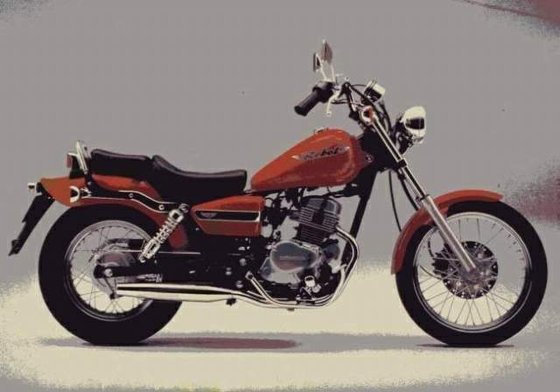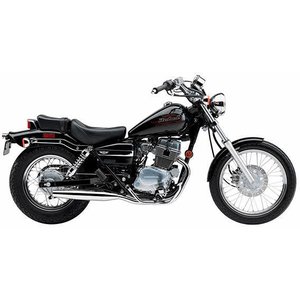Honda CA 125 Rebel (1995–2001) Review: A Timeless Entry-Level Cruiser

Introduction
The Honda CA 125 Rebel isn’t just a motorcycle—it’s a rite of passage. Produced from 1995 to 2001, this pint-sized cruiser has carved out a legacy as one of the most approachable bikes for new riders, budget-conscious commuters, and anyone seeking the cruiser aesthetic without the bulk. While its roots trace back to Honda’s 1980s engineering, the Rebel’s simplicity and reliability make it a standout in the used market today. After spending a week with a well-maintained 2000 model, it’s clear why this bike remains a favorite for those dipping their toes into motorcycling.
Design & Styling: Classic Cruiser Charm
The Rebel’s design is a masterclass in minimalist cruiser styling. Its teardrop fuel tank, pulled-back handlebars, and low-slung silhouette mimic the proportions of larger V-twin cruisers, but scaled down to 125cc dimensions. The 675 mm (26.6-inch) seat height is a blessing for shorter riders, allowing both feet to plant firmly on the ground—a confidence booster for beginners. Chrome accents on the exhaust, fenders, and spoked wheels (on later models) add just enough flash without feeling gaudy.
The riding position is relaxed, with mid-mounted footpegs and a neutral handlebar reach. However, the thinly padded seat and basic suspension remind you this is a no-frills machine. The analog speedometer and dummy lights keep the cockpit straightforward, though night riders might wish for brighter illumination.
Engine & Performance: Modest but Reliable
At the heart of the Rebel lies a 124cc air-cooled twin-cylinder engine—a carryover from Honda’s 1980s CB125. With 11 HP (8 kW) at 9,500 RPM and 9 Nm (6.6 lb-ft) of torque at 6,000 RPM, acceleration is leisurely. The engine thrives in city traffic, where its smooth power delivery and 5-speed gearbox make stop-and-go riding manageable. Cruising at 70–80 km/h (43–50 mph) is comfortable, but pushing toward its 95 km/h (59 mph) top speed requires patience and a willingness to tolerate vibrations.
Fuel efficiency is where this engine shines. Averaging 3.5 L/100 km (67 mpg), the 10-liter (2.6-gallon) tank delivers a 280+ km (174-mile) range—perfect for daily commutes. Cold starts are hassle-free thanks to the electric starter, though the carbureted engine demands careful choke use in cooler weather.
Handling & Comfort: Lightweight Agility
Weighing just 137–147 kg (302–324 lbs), the Rebel feels nimble at low speeds. The 1,460 mm (57.5-inch) wheelbase and narrow tires make flicking through traffic or U-turns a breeze. However, the budget suspension—116 mm (4.6-inch) telescopic forks up front and 75 mm (3-inch) dual shocks at the rear—struggles with potholes and rough roads.
Braking is adequate but uninspiring. The front 240mm disc with a 2-piston caliper provides decent bite, while the rear drum brake requires deliberate pressure. Riders accustomed to modern ABS systems will need to adjust their stopping distances.
Comfort is a mixed bag. The seat’s low height sacrifices padding, leading to numbness on rides over an hour. Wind protection is nonexistent, making highway jaunts a battle against fatigue.
Competition: How Does the Rebel Stack Up?
In the 125cc cruiser segment, the Rebel faces three key rivals:
-
Yamaha Virago 125:
Yamaha’s Virago boasts a smoother 125cc V-twin engine and a slightly more premium feel. However, it’s heavier (158 kg / 348 lbs) and harder to find in the used market. The Rebel’s lighter frame and lower seat give it an edge for urban maneuverability. -
Suzuki GN125:
The GN125 trades cruiser styling for a standard/UJM design. Its single-cylinder engine is simpler to maintain but lacks the Rebel’s twin-cylinder character. The Suzuki’s suspension is marginally better for rough roads, though. -
Honda VT125 Shadow:
Honda’s own Shadow outclasses the Rebel with a sharper 125cc V-twin, better acceleration, and a more comfortable seat. However, Shadows command higher prices used, making the Rebel the budget-friendly choice.
Verdict: The Rebel isn’t the most refined or powerful, but its affordability, Honda reliability, and beginner-friendly ergonomics keep it relevant.
Maintenance: Keeping Your Rebel Road-Ready
The Rebel’s air-cooled engine and simple chassis make it a DIY enthusiast’s dream. Here are key maintenance tips:
- Oil Changes: Use SAE 10W-40 oil (1.3L with filter changes every 4,000 km / 2,500 mi).
- Valve Adjustments: Check every 4,000 km—intake and exhaust valves both require 0.06–0.10 mm (0.002–0.004 in) clearance when cold.
- Chain Care: Clean and lubricate the 112-link chain regularly. Replace worn sprockets (13T front/39T rear) to prevent drivetrain slop.
- Tire Pressure: Maintain 2.0 bar (29 psi) front and rear for optimal grip and wear.
- Spark Plugs: NGK CR6HSA (standard) or CR6HIX (iridium) plugs with a 0.7 mm electrode gap ensure smooth starts.
Upgrade Recommendations:
- Swap the stock seat for a gel-padded aftermarket option for long rides.
- Install a high-flow air filter and aftermarket exhaust (check local noise laws) to unlock minor performance gains.
- Upgrade to braided steel brake lines for improved lever feel.
Conclusion: A Beginner’s Best Friend
The Honda CA 125 Rebel isn’t about speed or luxury—it’s about accessibility. Its forgiving nature, timeless design, and Honda’s bulletproof engineering make it an ideal first bike or urban runabout. While it shows its age next to modern 125s, the Rebel’s charm lies in its simplicity. For riders willing to embrace its limitations, this little cruiser offers big smiles per mile.
Ready to personalize your Rebel? Explore MOTOPARTS.store’s curated selection of upgrades, from ergonomic grips to retro-style saddlebags, and make this classic truly yours.
Specifications sheet
| Engine | |
|---|---|
| Stroke: | Four-stroke |
| Max power: | 8 kW | 11.0 hp |
| Max torque: | 9 Nm |
| Fuel system: | Carburetor |
| Max power @: | 9500 rpm |
| Displacement: | 124 ccm |
| Max torque @: | 6000 rpm |
| Bore x stroke: | 44.0 x 41.0 mm (1.7 x 1.6 in) |
| Configuration: | Inline |
| Cooling system: | Air |
| Compression ratio: | 9.4:1 |
| Number of cylinders: | 2 |
| Dimensions | |
|---|---|
| Wheelbase: | 1460 mm (57.5 in) |
| Dry weight: | 137 |
| Wet weight: | 147 |
| Seat height: | 675 mm (26.6 in) |
| Fuel tank capacity: | 10.0 L (2.6 US gal) |
| Drivetrain | |
|---|---|
| Final drive: | chain |
| Chain length: | 112 |
| Transmission: | 5-speed |
| Rear sprocket: | 39 |
| Front sprocket: | 13 |
| Maintenance | |
|---|---|
| Rear tire: | 130/90-15 |
| Engine oil: | 10W40 |
| Front tire: | data not available |
| Break fluid: | DOT 4 |
| Spark plugs: | NGK CR6HSA or NGK CR6HIX |
| Spark plug gap: | 0.7 |
| Forks oil capacity: | 0.468 |
| Engine oil capacity: | 1.3 |
| Valve clearance (intake, cold): | 0.06–0.10 mm |
| Valve clearance (exhaust, cold): | 0.06–0.10 mm |
| Recommended tire pressure (rear): | 2.0 bar (29 psi) |
| Recommended tire pressure (front): | 2.0 bar (29 psi) |
| Chassis and Suspension | |
|---|---|
| Rear brakes: | Drum |
| Front brakes: | Single 240 mm disc, 2-piston caliper |
| Rear suspension: | Dual shocks |
| Front suspension: | Telescopic fork (33 mm diameter) |
| Rear wheel travel: | 75 mm (3.0 in) |
| Front wheel travel: | 116 mm (4.6 in) |



















